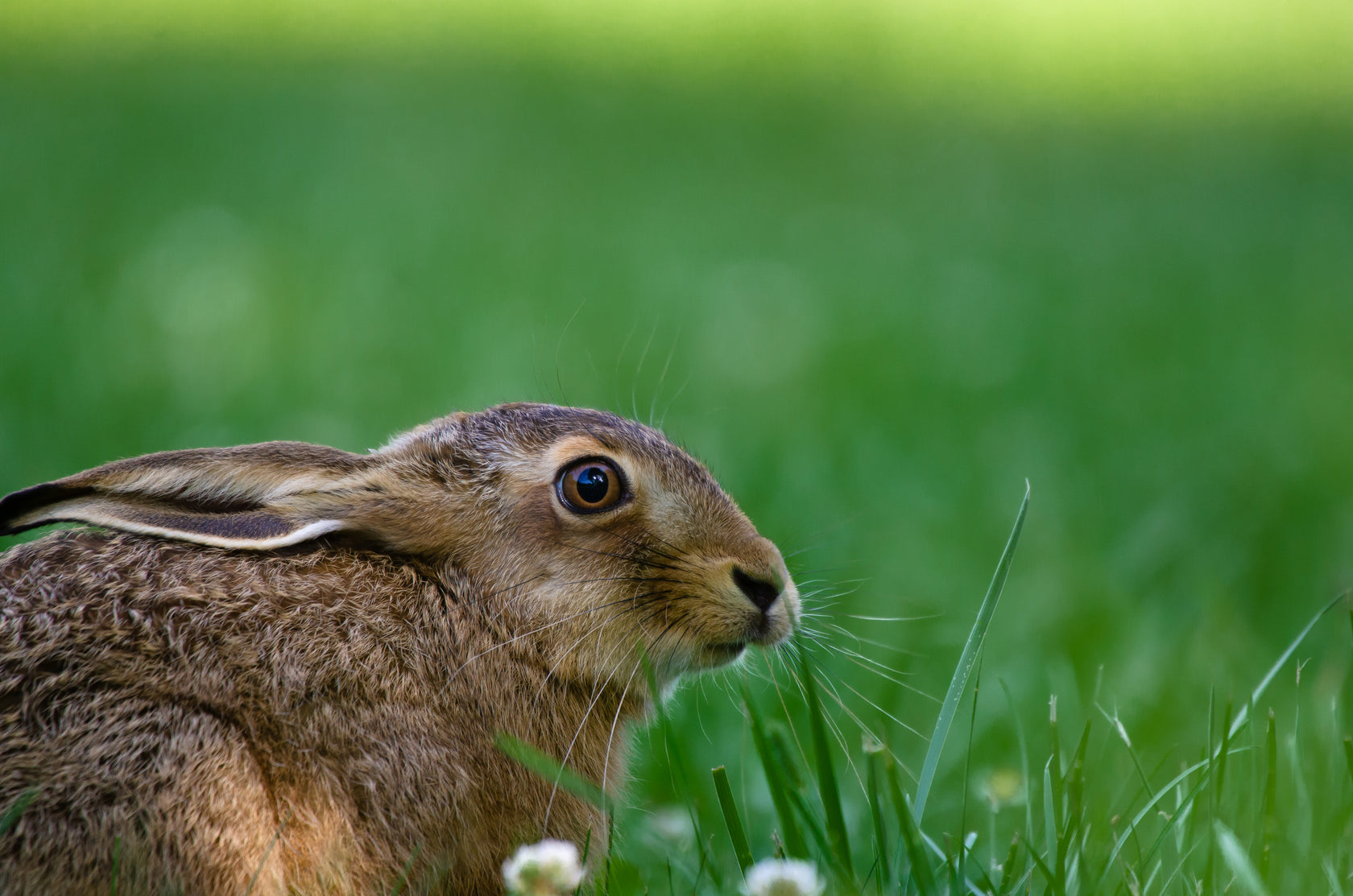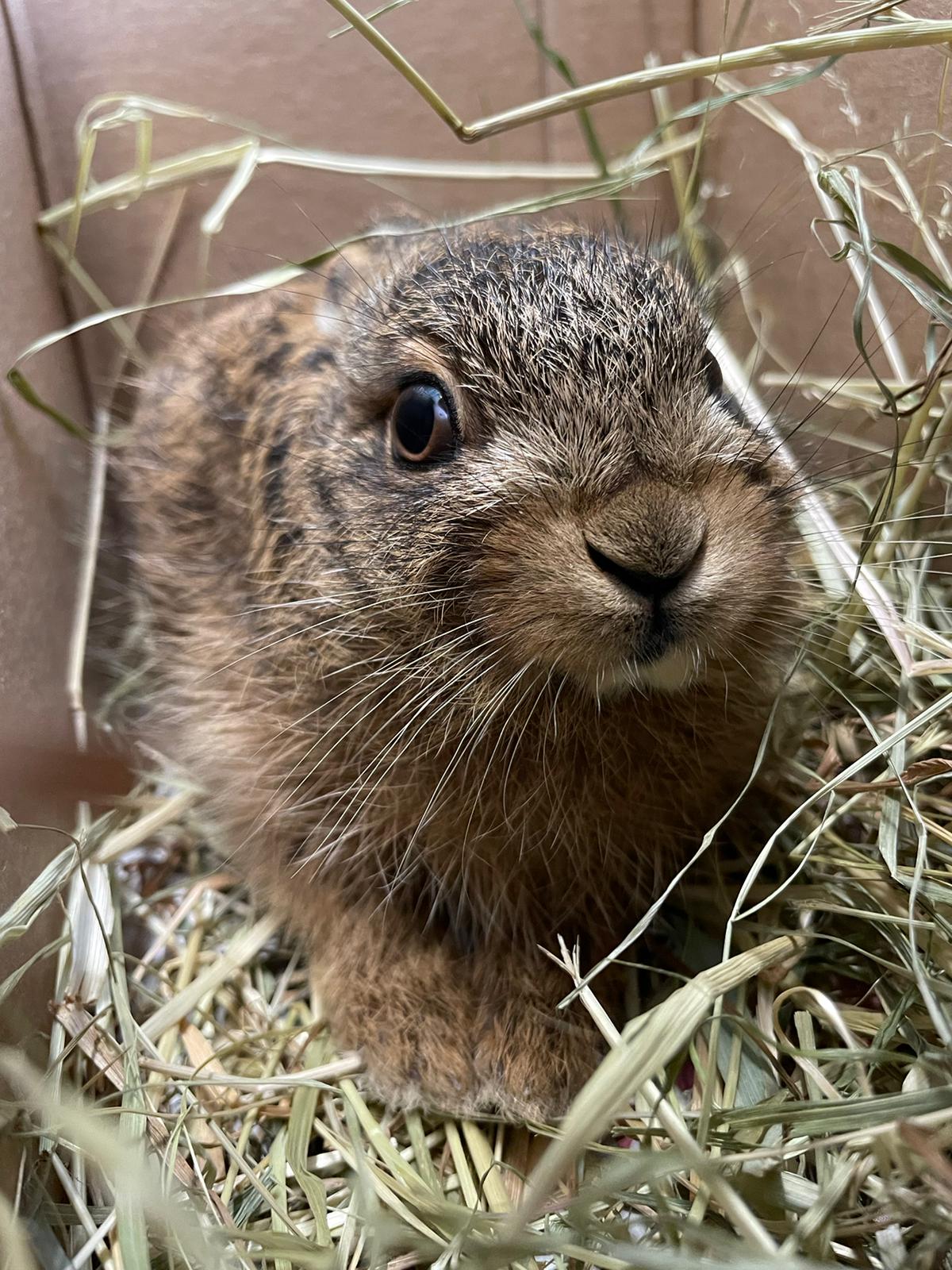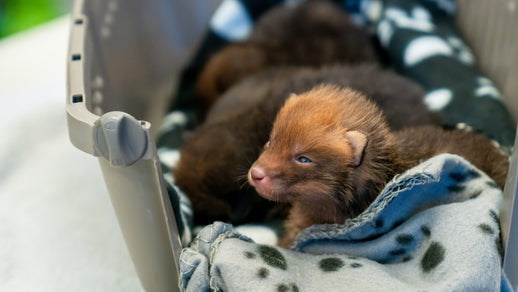
Rabbits and Hares
Rabbits and hares are found throughout the UK in a range of habitats. Both are considered naturalised species, with hares being introduced by the Romans and rabbits the Normans. Both species are prey animals and rely on sight, sound, speed and agility to avoid predators.

Baby Rabbits and Hares
Baby rabbits (kittens) have beige fur and pink skin around their nose, but baby hares (leverets) have dark fur and black skin around the nose.
Baby rabbits will be born blind and without fur, and they’ll stay in their burrow until they’re about three weeks old and look like mini adults. Their mother will come back each day to feed them.
Baby hares are born with eyes open and a full coat of fur, and they’re left alone by their mother from a very young age. They live out in the open, in a shallow hole in the ground. During the day, their mother will stay nearby to watch over them and she’ll come back to feed them at night.
When To Rescue
- They’re injured
- They’ve been caught by a dog or cat
- They are covered with flies’ eggs (these look like small grains of rice)
- Their eyes are closed, or they’re not covered in fur. This will be a baby rabbit that’s been dug out of the warren, so check for any other baby rabbits nearby
- You can see their mother is dead nearby. A mother rabbit or hare will have bald patches on her chest where the babies feed
If Immediate Rescue Isn't Required
- If it’s in danger, put on gloves or use a towel to move the animal to a safe place a very short distance away. Put the animal on the ground, somewhere sheltered such as under a plant.
- Move about 100 metres away, and watch the animal from a distance to see what happens.
- If it’s a young rabbit, it will make its own way back to the burrow when it’s ready.
- If it’s a young hare, it will stay very still, even if you watch for a while, because it’s waiting for mum to return. The mother will be nearby, waiting for you to leave and she may not come back if you stay too close or make lots of noise.
- The best thing to do is to leave the animal alone. Don’t touch them, stay very quiet and make sure any pets are kept away.
- If the baby rabbit or hare is still there two hours after sunset and the mother hasn’t come back for the babies, they will need to be rescued.
How to Handle and Transport
- If you need to rescue a baby rabbit or hare, make sure you wear gloves and handle them for as short a time as possible. Put the animal into a cardboard box lined with towels, with a hot water bottle to keep them warm.
- Make sure the bottle is wrapped in a towel so they can’t get burnt. Don’t try to give them food or water, as this can do more harm than good.
- Keep them in a quiet, warm place away from pets, and take them to a vet or rehabilitator as soon as you can.
- Don’t try to look after them yourself, they’re wild animals and they need specialist care to give them the best chance of surviving back in the wild.
- The care they need is very different to how pet rabbits are looked after, and they can also pass diseases to pet rabbits so they should never be kept together.



